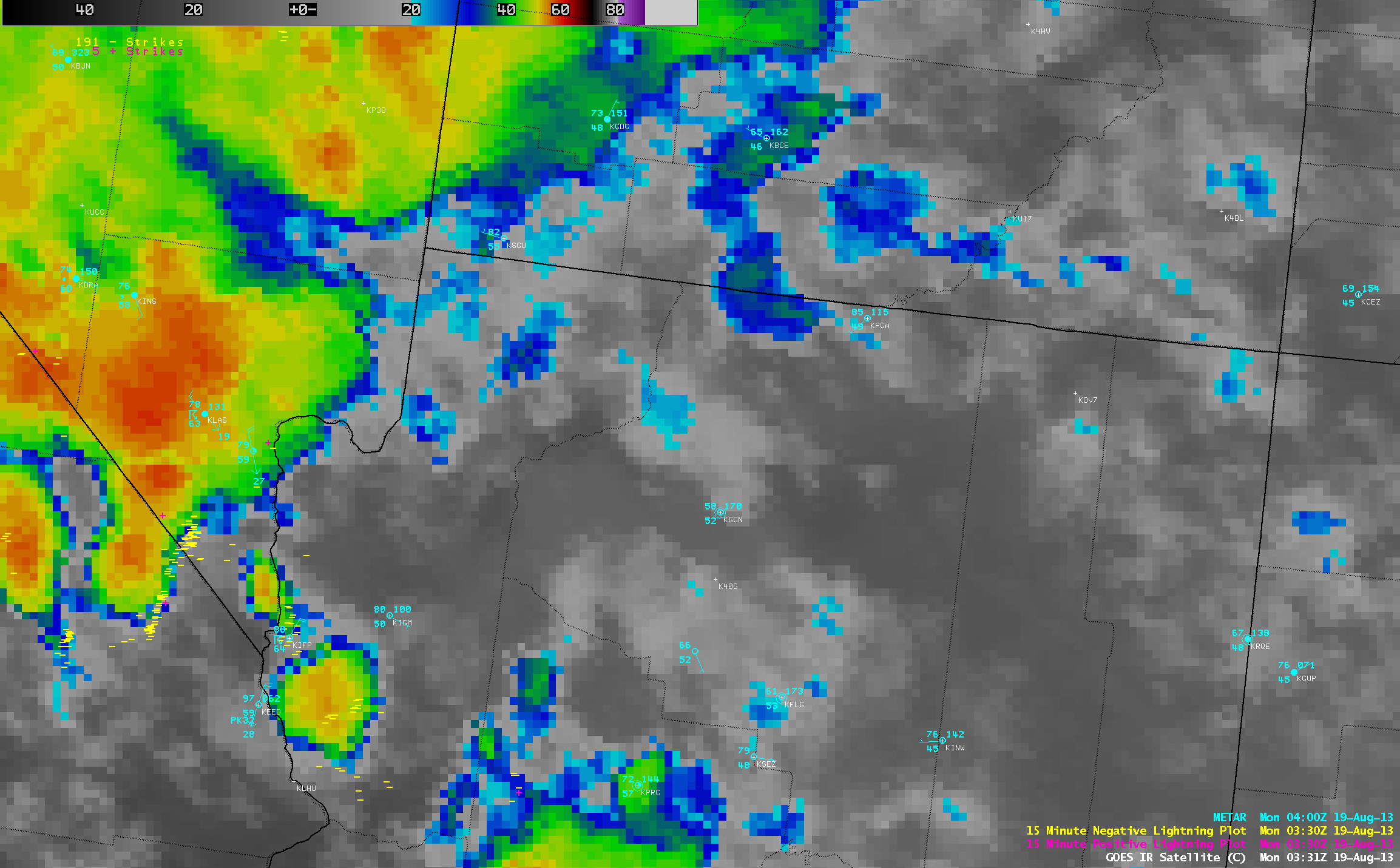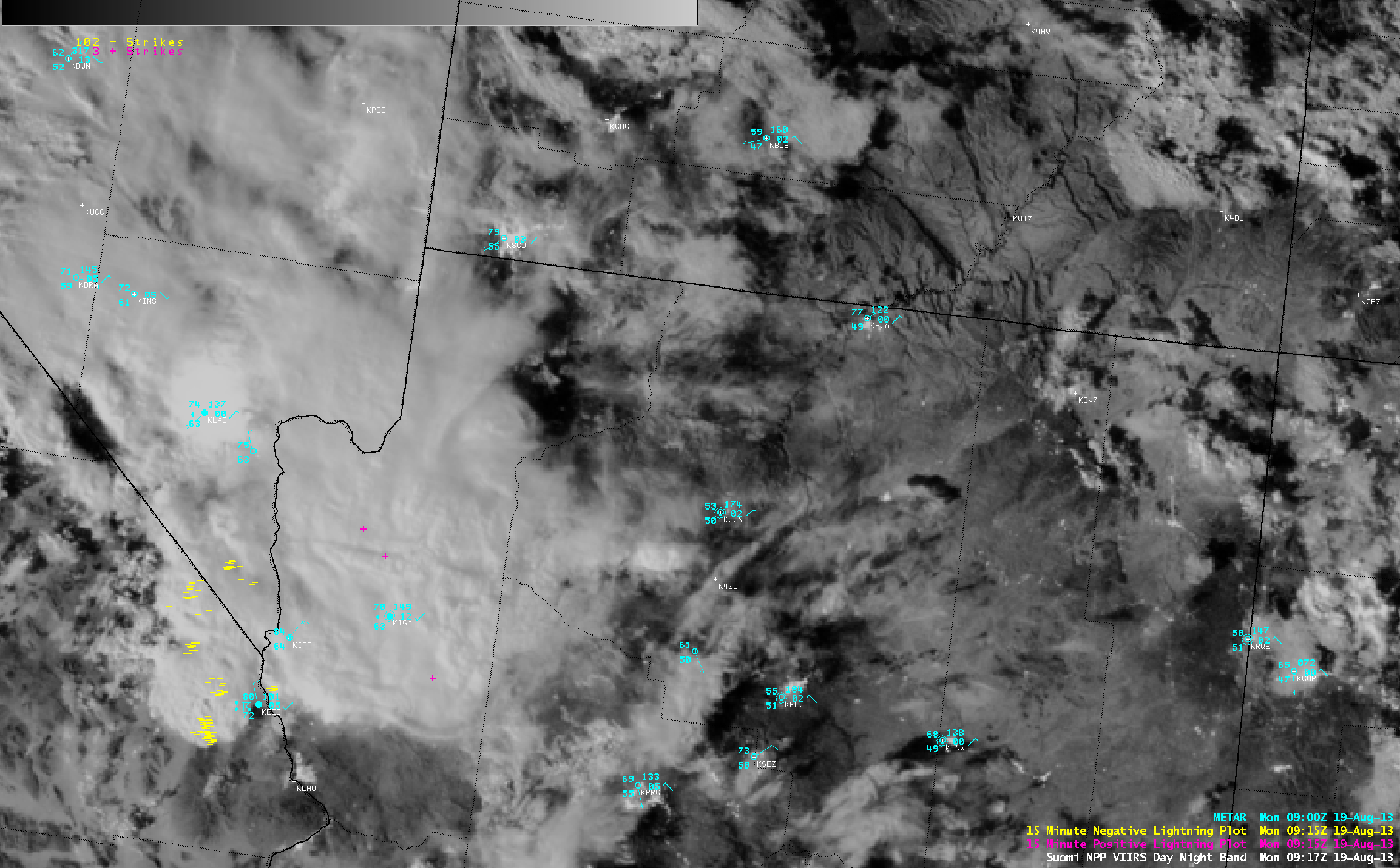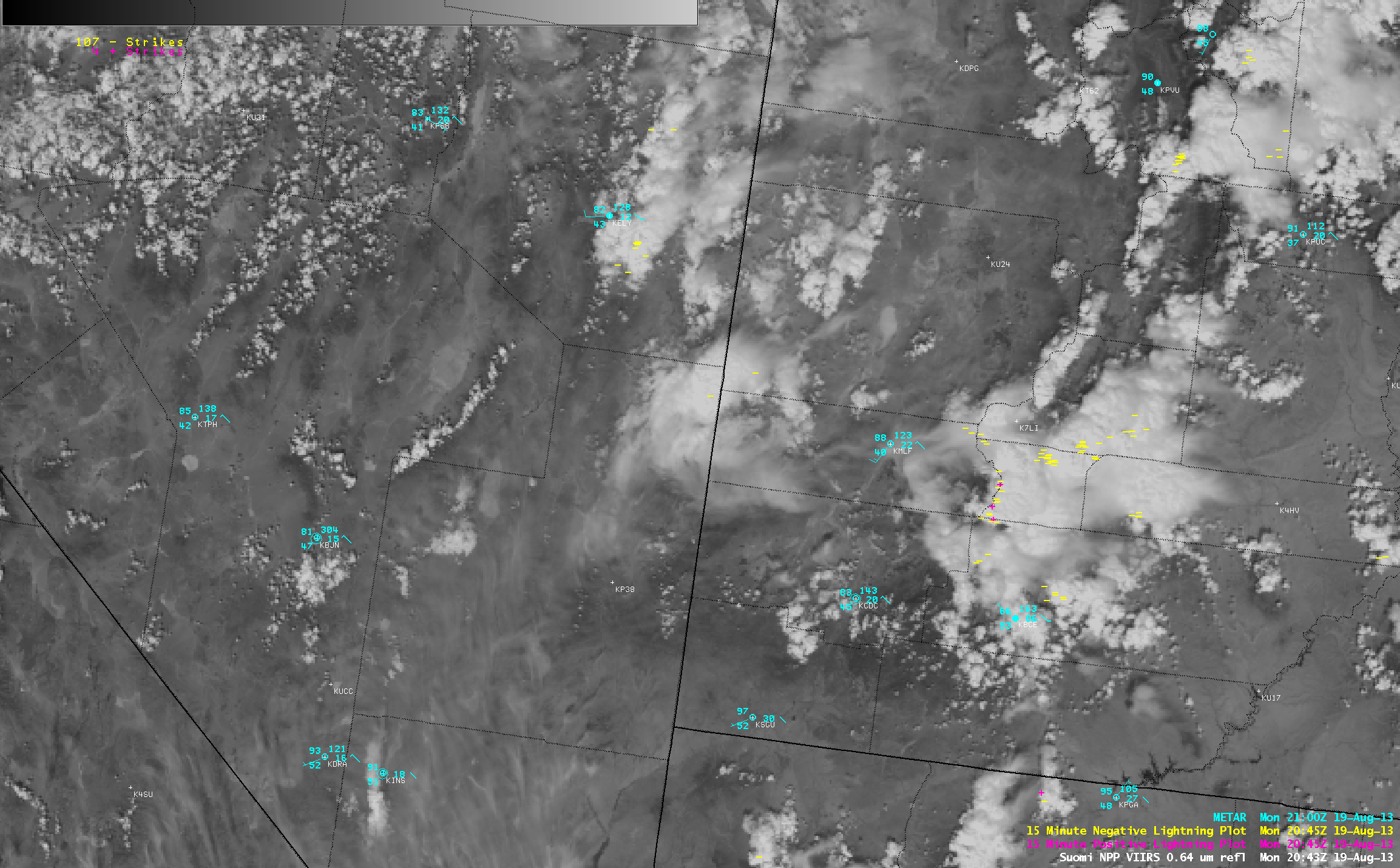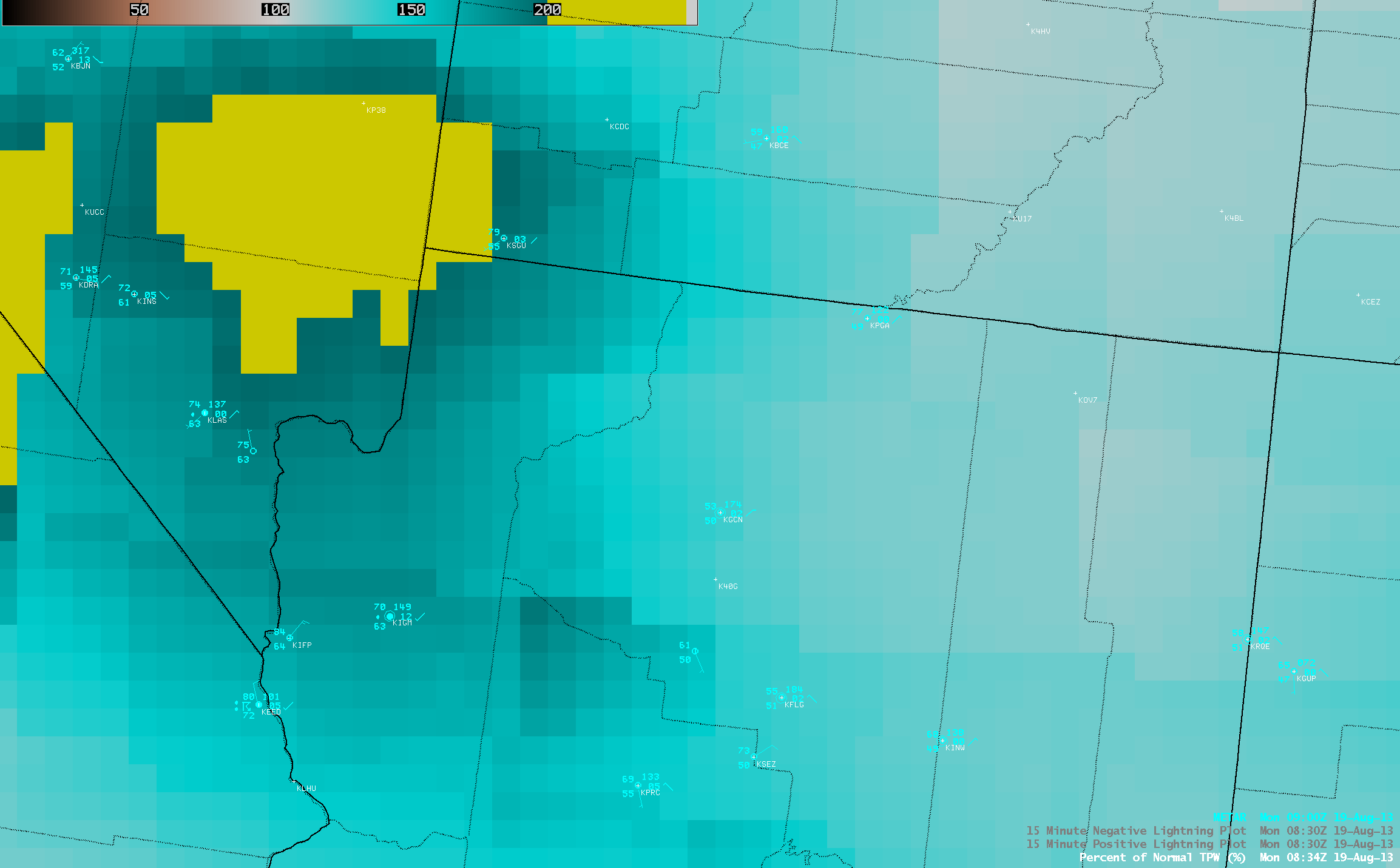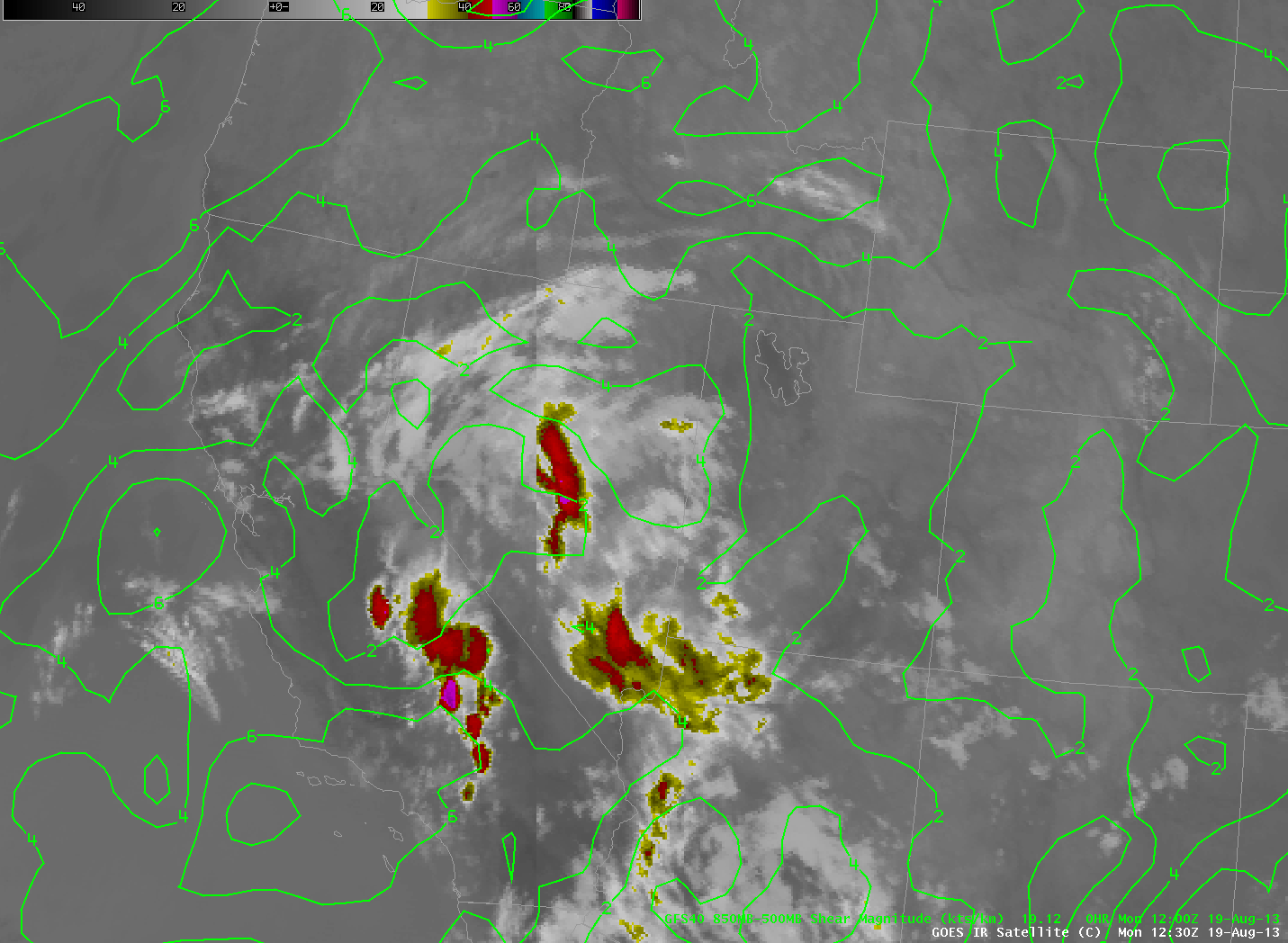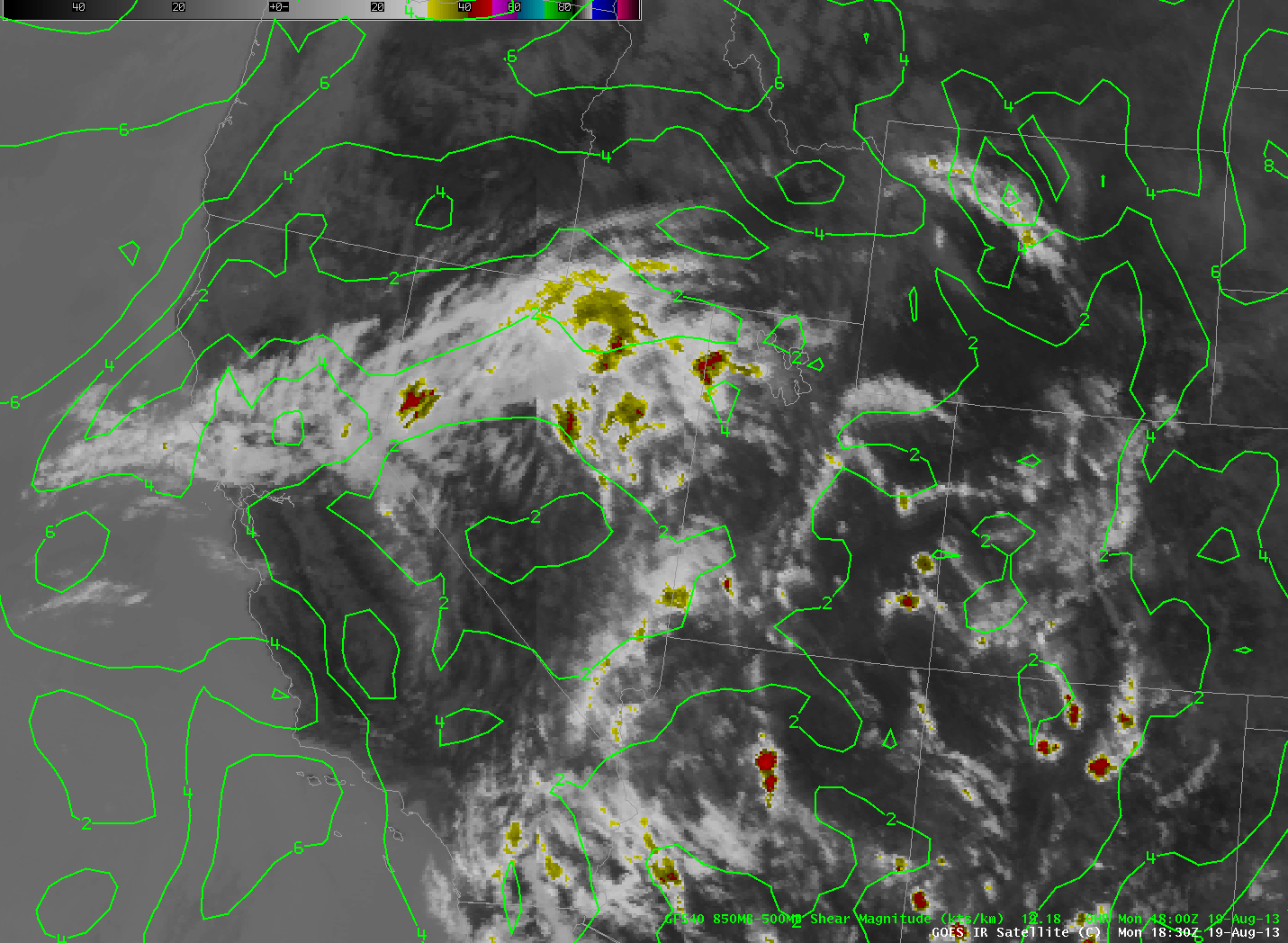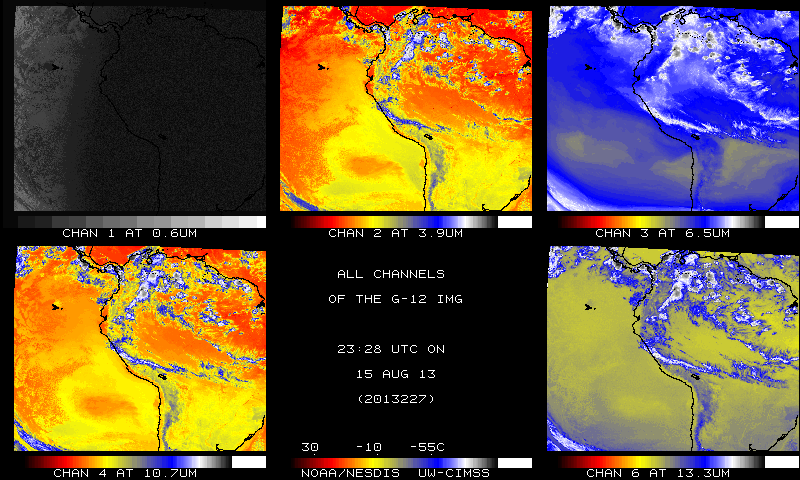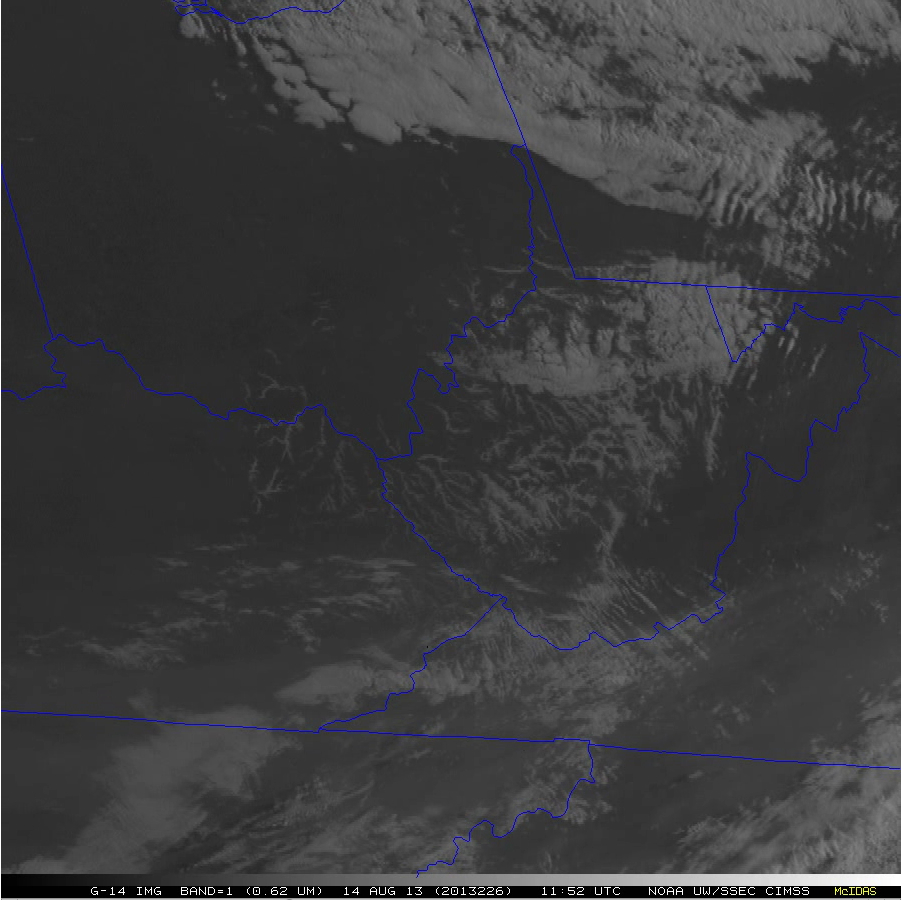AWIPS images of 4-km resolution GOES-13 10.7 µm IR channel data (above; click image to play animation) showed areas of nocturnal thunderstorms over southeastern California, western Arizona, and southern Nevada on 19 August 2013. These storms were initially producing numerous cloud-to-ground lightning strikes and exhibiting cloud-top IR brightness temperatures as cold as -66 C, but they began to dissipate toward sunrise as they continued to move northward.
A comparison of 375-meter resolution (projected onto a 1-km AWIPS grid) Suomi NPP VIIRS 0.7 µm Day/Night Band and 11.45 µm IR channel images at 09:17 UTC (below) provided a good example of the “visible image at night” capability of the Day/Night Band.
The GOES-14 satellite had been placed into Super Rapid Scan Operations for GOES-R (SRSO-R) mode, and was providing images at 1-minute intervals on this day. Once the cirrus canopy from the dissipating thunderstorms eroded, the GOES-14 0.63 µm visible channel images (below; click image to play animation; also available as a QuickTime movie) revealed the presence of a small yet well-defined Mesoscale Convective Vortex (MCV) which continued to propagate northward across far eastern Nevada. Toward the end of the animation (20:57 UTC), the MCV appeared to be playing a role in the initiation of new convection along its northern (leading) edge.
A comparison of Suomi NPP VIIRS 0.64 µm visible channel and 11.45 µm IR channel images at 20:43 UTC (below) showed that there were a couple of negative polarity cloud-to-ground lightning strikes (yellow) being produced by the convection that developed along the leading edge of the MCV.
The Blended Total Precipitable Water (TPW) product (above, shown at 3-hour intervals) indicated that a plume of TPW values in the 30-38 mm or 1.2-1.5 inch range (varying shades of yellow) were in place over the region where the thunderstorms had developed and moved northward. These monsoonal TPW values were 175-200% of normal for this area and this time of year (below).
In addition, the 850-500 hPa wind shear values across the region at 12 UTC (above) and 18 UTC (below) were relatively low, creating a favorable environment for the MCV to persist for several hours.
View only this post Read Less


